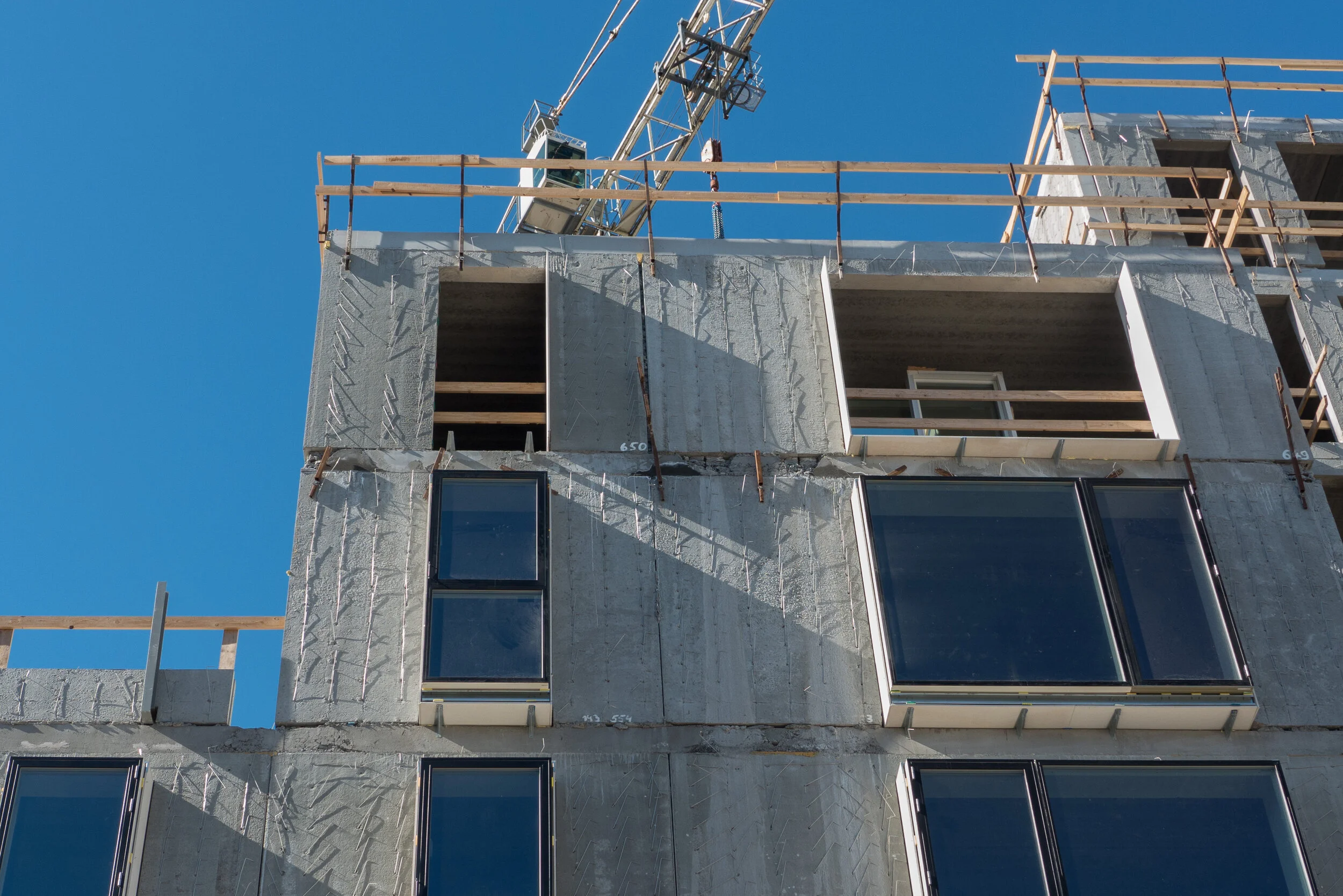Slab and clad buildings
/Surely, these new apartment blocks have little to do with architecture - or at least not architecture in any traditional sense. Its simply about engineering and rapid construction. It’s building slab and clad buildings.
In a way, the city has been here before. In the building boom of the 1890s, when speculative builders built fast and clearly built for big profits, when they were building new suburbs outside the old defences … new housing beyond the bridges or in Danish bro so Østerbro outside the east gate, Vesterbro going west and Nørrebro beyond the north gate.
Vesterbro had some of the worst house building of the period with some blocks of apartments with walls just a single brick thick and courtyards were tightly-packed to get in as many "homes" as possible that were barely better than the inner-city slums they replaced. Most of those apartment blocks, built for quick-profit, lasted little more than 50 years before they were torn down. Vesterbro, even after that thinning out, is still one of the most densely occupied areas in Europe so imagine what it was like before back-to-back blocks and courts within courts within courts were demolished.
But this type of building is not without problems.
One of the tallest and certainly the ugliest residential tower in Copenhagen has started to shed it's cladding and that problem will almost-certainly end in court as they decide if it's the architect or the engineer or the builders or the manufacturers of the cladding or even, God help them, the occupants who have to pay for remedial work.
A tower on Amager with 23 floors is not even finished, let alone occupied, and someone has just realised that somehow "the wrong sort of concrete" was used in the foundations. Surely, that too can only end in the law courts.
The building next to Østerport station has had it's controversial raspberry-pink cladding removed but nearly two years on and there is no sign of a solution so, at a major railway station - a gateway to the historic city for visitors - we have a building that looks as if, in suspended animation, it is on it's way down but with the demolition team on strike and certainly not on it's way up to a bright new future.
It would be wrong for citizens to see all this as a failure by architects as a profession and as a failure of modern architecture. When that happens, the cry of the populists usually goes up for a return to the past. The past was great but not simply as a source of inspiration for ersatz historicism … that way lies buildings that are still concrete but just concrete buildings clad in fake pediments and plastic casements.
Don't get me wrong, concrete, or, rather, good concrete used well, is fantastic but the problem with most of these concrete buildings is that they are dishonest. I don't mean dishonest in the legal sense - although the wrong concrete for foundations of tower blocks may prove to be just that - but intellectually dishonest.
Bricks are an amazing and well-tried building material and have been used in some of the most important buildings in the city. Ornate brickwork might not be to everyone's taste - particularly if you go for the minimalist in your idea of what constitutes good style - but brick can be used properly and used well in modern buildings and could or should be pushed to new limits …. but not when it is hung in a pre-formed factory panel over the insulation and too often the brick is there primarily to make the punters feel they are buying into something cozy and homely.
Several of the new buildings in the city try to create the effect of modern masonry, facades cut boldly from giant slabs of stone but done with lino-thin sheets of cladding held in place by brackets and wires and with little or no attempt to respect or reflect on the exterior the logic of the construction and the internal arrangement of the interior. That's what I mean by dishonest. And I'm not being an intellectual snob because I do think must people sense when something is wrong or something is built badly or is badly thought through. People certainly notice when a building doesn't work or doesn't do what it is supposed to do or makes life more difficult or more unpleasant rather than better.
Don't blame the architects … or rather don't blame the good architects who were paid to produce fancy concept drawings and provide a recognised name to get through planning applications and were then dropped to be replaced by people without the training or the pay grade to keep the worst expectations and demands of the client in check. There has been at least one case recently in the city where a good architect has disowned a building they started but were not employed to see through to completion.
Of course it's not all gloom and doom and certainly it is not inevitable. Some amazing new buildings are built and not just major public projects. Maybe the city could just grit it's teeth and start an annual Best Developer award and hope that goads some of the moneymen into doing better.
Certainly, when presented with a new development, the first question of the planners should be just what does this building add to the city.
What's needed is a reality check with open and realistic accounting on both sides. Pay for the cheapest possible and you will get the worst possible. Commission and build for the long term and then you might or might not make a good profit on top but at least you and we would end up with better buildings.











































